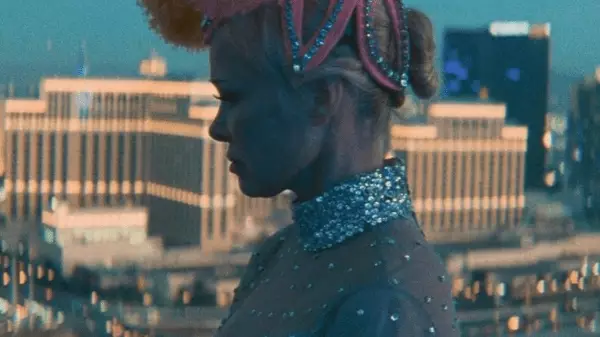Pamela Anderson’s return to the screen has been much anticipated, especially in the wake of her revealing Netflix documentary, “Pamela, a Love Story.” Directed by Gia Coppola, “The Last Showgirl” marks a significant moment for both Anderson and the industry at large. Emerging as an emblematic figure of the ’90s, Anderson’s journey has often been overshadowed by her public persona as a blonde bombshell. Yet, in this new film, we see her step into a role that transcends mere appearances, inviting the audience to witness the complexities behind her character, Shelley—a Vegas showgirl navigating the turbulence of her fading career and the challenges of motherhood.
Coppola has drawn fascinating comparisons between Anderson and iconic figures like Marilyn Monroe. In her creative process, she considered how Monroe, a woman defined by both beauty and tragedy, might resonate in today’s context through Anderson. Coppola’s reflection that Anderson embodies “the Marilyn of our time” is both flattering and revealing. It suggests a cyclical narrative in Hollywood, where the struggles and triumphs of female stars continue to echo across generations.
Anderson’s character Shelley is not merely a parallel to Monroe; she engages with themes of aging, relevance, and personal fulfillment that resonate deeply with contemporary audiences. The film takes viewers through Shelley’s emotional landscape, emphasizing not only her professional setbacks but also her longing for meaningful connections, particularly with her daughter, portrayed by Billie Lourd. This aspect of the narrative humanizes the often-glamorized world of performance and unveils the private battles faced by individuals defined by their public images.
For Anderson, embodying Shelley is more than just acting—it’s a journey of self-reflection. During discussions at the Toronto International Film Festival, she expressed how the role resonated with her own life experiences, revealing insights into the dichotomy between external perceptions and internal realities. “Most of my career has been about the external,” she stated, hinting at the superficial aspects that have long defined her career. This exploration of identity allows Anderson to peel back the layers of her own narrative while inviting audiences to glimpse her genuine self, a stark contrast to the bombshell image that has dominated her public persona.
As “The Last Showgirl” prepares for its release, it will no doubt prompt discussions surrounding the portrayal of women in entertainment, the significance of storytelling, and the paths toward self-actualization. Anderson’s role as Shelley is a bold step in reclaiming her narrative, demonstrating that behind every well-recognized figure lies a compelling story deserving to be told—a narrative that sparks dialogue about aging, motherhood, and the relentless pursuit of authenticity in a world enamored with superficiality. As this film unfolds, it not only marks a personal and professional renaissance for Anderson but also challenges audiences to reconsider how we define celebrity and the complexities that accompany it.


Leave a Reply